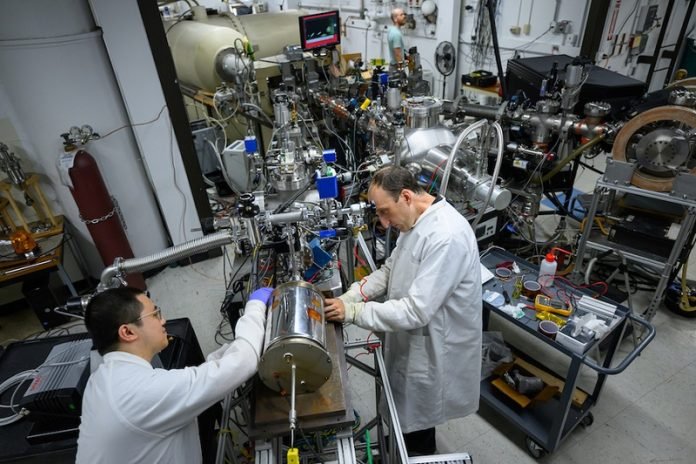
In the race to combat climate change, scientists are looking at every possible source of clean energy, including nuclear power.
While many people talk about solar and wind power, there’s a growing interest in nuclear energy as a vital part of the solution.
Michael Short, a nuclear science professor at MIT, believes that it’s time to use every tool we have, including nuclear power, to fight climate change.
Nuclear reactors have been around for a while, but there’s an exciting development in the works: reactors using molten salts.
These new designs could be safer and more efficient than traditional reactors.
However, there’s a big problem: molten salt can cause metals to corrode, or wear away, which is bad news for the parts inside a reactor.
Short and his colleague Weiyue Zhou have been on a mission to solve this issue. They spent eight years figuring out if radiation, which is present inside reactors, makes the corrosion problem worse.
Surprisingly, their experiments showed that in some cases, radiation can actually slow down corrosion.
The journey to discovery
At the beginning of their research, Short and Zhou faced a big challenge.
They needed to create an experiment that could test how radiation and molten salt together affect metal corrosion.
This was tough because most labs only looked at these factors one at a time, not together. After many attempts and failures, Zhou came up with a new design that worked.
Their successful experiment involved using a special machine that shoots protons (a type of tiny particle) at a piece of metal sitting in molten salt.
This setup mimicked the conditions inside a nuclear reactor. What they found was groundbreaking: under the right conditions, radiation didn’t make corrosion worse; it actually slowed it down.
How did they do it?
The researchers tested different metal alloys (mixtures of metals) to see how they reacted to the molten salt and radiation.
They discovered that the secret to slowing down corrosion was the type of alloy they used. Some alloys corroded more slowly when irradiated, which means they could last longer in the harsh conditions of a molten salt reactor.
This finding is crucial for the future of nuclear power. It means that by choosing the right materials, we can build nuclear reactors that are safer and last longer. This could help make nuclear energy a bigger part of our fight against climate change.
There’s still a lot of work to be done. The team’s results need to be tested and confirmed by other scientists.
However, Short and Zhou’s research offers a beacon of hope. It provides a guideline for selecting materials for new nuclear reactors that could stand up to the challenging conditions inside.
Their work also shows the importance of not just focusing on one type of clean energy. To truly combat climate change, we need to explore all options, including nuclear power.
With innovative approaches like molten salt reactors, we might just have a stronger ally in our quest for a cleaner planet.



